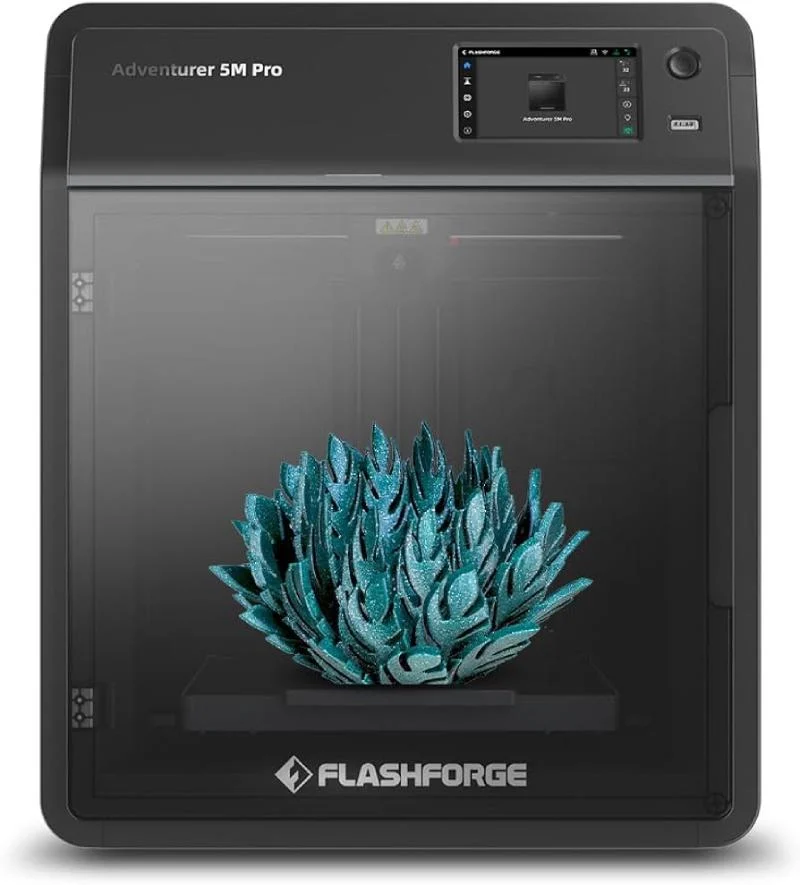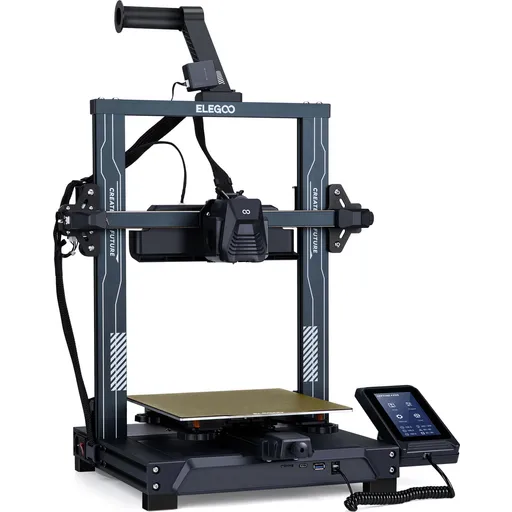Compare Adventurer 5M PRO vs Neptune 4 PRO
Comparison between the best 3D printers
Choose the best 3D printer at the best price. The cheapest 3D printers are here.
Buy a 3D printer here with 3D Fila.
 |
 |
|
| Model | Adventurer 5M PRO |
Neptune 4 PRO |
| Printing Material | Filament | Filament |
| Buy Filament for Flashforge Adventurer 5M PRO | Buy Filament forElegoo Neptune 4 PRO | |
| Estimated price | $599,00 | $359,00 |
| Manufacturer | Flashforge | Elegoo |
| Release Year | 2023 | 2023 |
| Print Volume [mm] | 220x220x220 | 225x225x265 |
| Printer Size [mm] | 380x400x453 | 475x445x515 |
| Weight [kg] | 10,8 | 8,9 |
| Power Loss Recovery | YES | YES |
| Enclosed printer | YES | NO |
| Bed Leveling | Automatic | Automatic |
| Filament End Sensor | YES | YES |
| Bed type | Heated | Heated |
| Power supply system | Direct Drive | Direct Drive |
| Standard nozzle | 0,4 | 0,4 |
| Maximum Nozzle Temperature [°C] | 280 | 300 |
| Maximum Bed Temperature [°C] | 110 | 110 |
| Maximum printing speed [mm/s] | 600 | 500 |
| Filament holder | YES | YES |
| Camera for supervision | NO | NO |
| Recommended filaments | PLA, PETG, TPU, PLA-CF, PETG-CF | PLA, PLA+, TPU, PETG, Nylon, ABS |
| Recommended slicers | FlashPrint 5 | Bambu Studio, Super Slicer, Cura, Prusa Slicer, Orca |
| Maximum Resolution [mm] | 0,1 | 0,1 |
| Processor | ARM 64 bit | |
| Display | Touchscreen 4,3'' | Touchscreen 4,3'' |
| Power Supply | 350 W | 310 W |
| Connectivity | Wifi / Ethernet / USB | USB, microSD |
| Operating systems | Windows, Linux, Macbook | Windows, Linux, Macbook |
| Date of registration in the system | 2024-07-09 | 2024-07-02 |
| Release date | 2023 | 2023 |
| Extra features | The Flashforge Adventurer 5M PRO features advanced features such as a CoreXY motion system, direct drive extruder, print speeds of up to 600mm/s and maximum acceleration of 20,000mm/s². It features fast nozzle changes, automatic calibration, active vibration compensation, camera monitoring, time-lapse video, HEPA and carbon filters for particles and VOCs, and an intuitive 4.3-inch touchscreen interface. Ideal for printing materials such as PLA, PETG, ABS and TPU. | The Elegoo Neptune 4 Pro stands out for its advanced features, including pre-installed Klipper firmware, a dual-gear direct extruder with a 5.2:1 ratio, a high-temperature nozzle (up to 300°C), a flexible magnetic PEI platform, efficient cooling fans, and a 121-point auto-leveling system. The printer also features a 4.3-inch touchscreen interface, dual linear bars on the X and Y axes, and a segmented heated bed for energy savings. |
| Support for multiple colors and materials (AMS and CFS) | NO | NO |
Notes * |
||
| Cost-benefit | 7 / 10 | 7 / 10 |
| Hardware | 3.5 / 10 | 2.8 / 10 |
| Tela | . | . |
| Print volume | 3 / 10 | 3 / 10 |
| Performance | 5 / 10 | 4 / 10 |
Conclusion |
| In comparing the Flashforge Adventurer 5M PRO and the Elegoo Neptune 4 PRO, both 3D printers exhibit unique strengths catering to different preferences and budgets. The Adventurer 5M PRO, positioned at a higher price point, offers a range of advanced features which enhance its performance capabilities, such as a CoreXY motion system, automatic calibration, and superior print speeds. It also boasts an enclosed design that is beneficial for temperature-sensitive materials and provides greater safety during operation. With a strong focus on user experience, its touchscreen interface and robust support for various materials make it a versatile option for professional and enthusiast users alike. On the other hand, the Neptune 4 PRO, while more affordable, provides noteworthy features such as high-temperature capabilities and efficient cooling mechanisms, making it suitable for a wide array of materials, including nylon and ABS. The printer’s dual-gear direct extruder and impressive auto-leveling system contribute to its usability and detail in prints. However, its lack of an enclosed frame may limit performance with certain filaments sensitive to temperature fluctuations. In conclusion, choosing between these two models largely depends on the user’s specific needs and budget constraints. The Adventurer 5M PRO is ideal for those seeking advanced features and higher print speeds for a professional setting, while the Neptune 4 PRO presents a strong cost-effective option, delivering reliability and quality suitable for hobbyists and casual users. Both printers provide commendable performance and value, evident through their good cost-benefit ratios, making them suitable contenders in the 3D printing market. |

